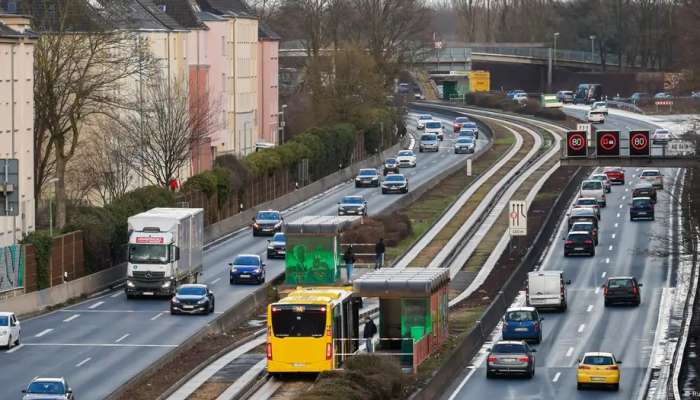
Brussels: More than one in five Europeans are exposed to unhealthily high levels of noise pollution from road, rail and aircraft, according to a report out on Tuesday from the European Environment Agency (EEA).
Long-term exposure to the sound of traffic has been connected to a range of health issues, including cardiovascular disease, mental illness, diabetes and premature death.
Children and young people are believed to be particularly vulnerable to its far-reaching impacts, which can include educational performance and weight gain.
The report finds an estimated 112 million people across 31 countries in Europe live with long-term traffic noise louder than the thresholds of 55 dB set by the European Noise Directive. That is equivalent to a residential street or a normal conversation.
The number impacted rises to over 30% of Europeans when measured against stricter World Health Organization recommendations for safe levels of sound.
"Noise pollution is often overlooked, considered just an annoyance of everyday life," said Leena Yla-Mononen, executive director of the EEA, but argued "it’s a problem all EU Member States need to urgently address if we are to make progress on our EU 2030 zero pollution target to reduce noise pollution."
The report identified road traffic as the main problem — particularly in crowded urban areas — impacting an estimated 92 million people across the continent.
Only a third of the population in cities assessed have access to quiet, green areas within 400 meters of their homes. Countless studies highlight the health benefits of time spent in nature.
Serious health impacts
Noise from traffic is the third biggest environmental health threat in Europe, behind air pollution and temperature related factors, according to the report. Across the continent, it results in the annual loss of 1.3 million healthy life years, which the report measures by combining years of life lost due to premature death with those lived in bad health.
Environmental noise and the resulting sleep disturbance can trigger both physical and psychological stress responses associated with metabolic illness, stress and anxiety, disease and cognitive impairment.
The report, which says millions suffer from sleep disturbances resulting from excessive noise, cites 66,000 related premature deaths as well as tens of thousands of cases of cardiovascular disease and type 2 diabetes in Europe each year. It highlights new research pointing at a potential connection to depression and dementia.
Too much noise is also taking its toll on the young. The authors say being blasted by the sounds of traffic is causing half a million children to experience reading difficulties and 63,000 to have behavioral challenges. It also draws a connection to more than a quarter of a million overweight young people.
Animals suffering from the racket
Humans are not the only ones distressed by the din. Wildlife is also being disrupted.
Almost a third of Europe’s most threatened and valuable protected nature reserves are at the mercy of roaring traffic. In Europe’s waters, the noise of shipping, offshore construction and ocean exploration is impacting marine wildlife. Many species, such as whales and dolphins, rely on sound to survive.
Studies have found that all animal species change their behavior in response to high levels of noise.
Birds such as great tits in cities in Europe, Japan and the UK have been recorded singing higher than their country counterparts, and vocal changes have also been noted in insects, grasshoppers and frogs living near motorways.
Among animal species noise pollution can disrupt mating, the rearing of offspring, and make it harder to locate prey.
Global challenge but not all suffering equally
Noise pollution is also costing the European economy $95.6 billion (€82.43 billion) annually, through loss of productivity resulting from its health impacts.
While the report focused on Europe, extreme noise can be found in all major cities, from London to Dhaka to Algiers.
In New York, 90% of people using transport are subject to noise that exceeds safety limits and can lead to permanent hearing damage.
Around the world, poorer communities are more likely to be located beside industrial plants, landfills or major traffic arteries, exposing them to more noise than wealthier residents in the same city.
Experts have suggested noise pollution could be eased by reducing traffic, setting lower speed limits, promoting more public transport as well as electric vehicles and cycle paths.
The EEA report says action needs to be taken at both the EU and national level, recommending improved access to quiet and green spaces in cities, as well as measures such as using low noise tires, regular rail maintenance to smooth tracks and optimizing aircraft take-off and landing patterns.
It says without additional regulatory or legislative action, the EU is unlikely to reach existing targets aiming for a 30% reduction in the number of people chronically disturbed by transport noise by 2030.